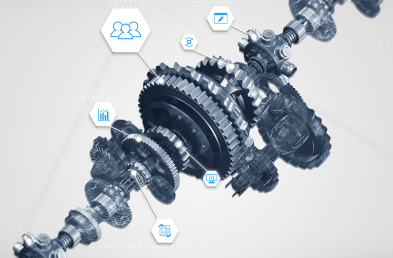The adoption of digital technology started a few years ago, expanding fast enough to cover every requirement of an organization as it grows and to continue evolving to innovate the way we work today.
The adoption of digital technology started a few years ago, expanding fast enough to cover every requirement of an organization as it grows and to continue evolving to innovate the way we work today.
As innovative technology grew consistently, the need to improve the security and protection of data while maintaining high performance and availability of the data software grew exponentially.
As part of our life-long learning journey, Premergency identifies and commits to improving ways to increase the agility and flexibility of our customer response, ensure business continuity, and foster scalability to maximize our services to our clients and community.
Has technology been growing exponentially? Yes, it has. Innovation and its impact on technology production keep scaling and are getting faster and faster with each passing year. Computers’ speed and power have been doubling consistently since the 1960s. Each generation of technology improves over the last one, and the rate of progress from version to version speeds up. Imagine making first a chair with hand tools, then power tools, and finally having an assembly line.
We are steadfast in our corporate culture and our Customer Service philosophy. With that, the creativity and talent put into building our software using the “hand-tool and power tool” analogy.
Since the inception of ALEN in 2019, our server infrastructure has served us well in a cyber-protected infrastructure with systems and operations control (SOC) hosted within Canada. The protection and security of our clients’ data are paramount as we parallel a standard of practice in business continuity backup methodology.
Our internal Key Performance Indicator (KPI) analysis identified challenges we needed to implement as a specialized Software as a Service (SaaS) organization across our ecosystem.
This 2023, we are implementing new strategies and processes to improve our service, performance, and security. One of these strategies is the implementation of the Kubernetes methodology for safe deployment, high availability, and high-performance server infrastructure management.
One of these strategies is the implementation of the Kubernetes methodology for safe deployment and management.
What is Kubernetes?
Also referred to as K8s, Kubernetes is an open-source container orchestration platform that schedules and automates deployment and manages and scales containerized applications like our ALEN LMS.
Kubernetes is about optimization and automating many of our development operation (DevOps) processes that were previously handled manually, thus creating better management opportunities for our software development team.
What are some benefits of Kubernetes?
Kubernetes can “self-heal” containerized applications, making them resilient to unexpected failures. It can auto-scale them to ensure optimal utilization of cloud resources. Kubernetes greatly simplifies the process of deployment operations.
K8 makes it easier for our enterprise’s apps (ALEN) to have greater scalability and be flexible, portable, and more productive.
But the benefits don’t stop there. Here’s a closer look at why we choose Kubernetes for all apps.
Server Container Performance
Kubernetes’s container orchestration makes for a more efficient workflow with less need to repeat the same processes, which means not only fewer servers but also no need for clunky, inefficient administration.
Increased DevOps efficiency for microservices (ALEN) architecture
Container integration and access to storage resources make development, testing and deployment simpler.
This means faster development and optimized release and deployment times. The sooner our team deploys Kubernetes during the development lifecycle, we will be able to test code early on and ensure successful controls and performance.
Deploying workloads in multi-cloud environments
Among the other benefits of Kubernetes, workloads can exist in a single cloud or be spread easily across multiple cloud services. Kubernetes clusters allow the simple and accelerated migration of containerized applications from on-premises infrastructure to hybrid deployments across our private cloud infrastructure without losing any of the app’s functions or performance.
More portability with less chance of vendor lock-in
The host operating system (OS) is smaller, faster, and more portable. This gives you more flexibility and reduced response time.
Automation of deployment and scalability
Our Kubernetes infrastructure will schedule and automate scaling, which allows our team to scale up or down to meet demand faster. Autoscaling starts up new containers as needed for heavy loads or spikes, whether due to server performance usage, memory thresholds or custom metrics — for instance, when an online event launches and there’s a sudden increase in user use.
When the need is over, Kubernetes auto-scales down resources again to reduce waste.
Not only does the platform scale infrastructure resources up and down as needed, but it also allows easy scaling horizontally and vertically.
Another benefit of Kubernetes is its ability to roll back an application change if something didn’t pass a control.
High availability in a cloud environment
Kubernetes accommodates increasing demand and keeps the system live 99.9% of the time. If one node in a multi-node cluster fails, the workload is redistributed to others without disrupting availability to users.
It also provides self-healing capabilities and will restart, reschedule, or replace a container when it fails or when nodes die without disrupting a user on the system. It also allows for rolling updates to our software without downtime.
Open-source benefits
Kubernetes is a community-led project and a fully open-source tool, meaning there is a massive ecosystem of other open-source tools designed to integrate with it.
The platform’s strong support means continued innovation and improvements to Kubernetes are always available, which protects the investment in the platform. This means no lock-in to technology that soon becomes outdated.
It also sees support and portability among all the leading public cloud providers, including IBM, AWS, Google Cloud and Microsoft Azure.
In conclusion, moving infrastructure to a Kubernetes methodology is an optimization strategy. It works towards better and safer processes and data upkeep, as well as higher deployment, availability, scalability, efficiency and flexibility.
It’s a clear advantage for a server infrastructure to increase agility, allowing SaaS companies like Premergency to provide secure, fast, and efficient services to support technology like ALEN.
If you want to know more about our strategic improvements for 2023, send us an email at hello@premergency.com with your questions.




